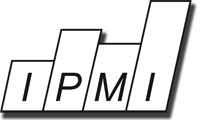Research Projects
Understanding the Benefits of Blockchain Technology for Patent Management
Blockchain technology has a high potential for making an impact on different industries. Many potential technological variants of blockchain technology have already been predicted, e.g. in terms of smart contracts or decentralized application platforms. A prominent application field for both technological variants may be the patent management of companies and other patenting organizations. In patent management, secrecy over the course of developing an invention plays a central role, as an invention has to be unknown to the world to be granted as a patent. This secrecy is often protected by non-disclosure agreements in particular for cooperation between companies or other organizations such as research institutes. At the same time and in contrast to the idea of secrecy, it is important to document the different outcomes and laboratory activities over the course of development, as this documentation could be helpful in legal cases of patent infringement. The project will address questions that arise: how many of the expectations regarding the blockchain technology can already be underpinned by reliable facts? How do experts from patent management deal with the new opportunities? Will there be standards developed for an inter-company exchange of secret information in patent management? How will the Blockchain technology change the traditional ways in patent management?
How patent data can support the Cross-Industry Innovation process
With the development of the Open Innovation approach by CHESBROUGH (2006a; 2006b) and CHESBROUGH ET AL. (2006), a change from the traditionally isolated innovation culture to an open innovation culture can be observed. In an increasingly interconnected world (industry 4.0 or the Internet of things), companies need knowledge which is beyond their own core competencies. As part of Open Innovation, the concept of Cross-Industry Innovation is an opportunity to generate innovations through cross-industry collaboration and knowledge exchange. Scientists have developed a variety of process models for generating Cross-Industry Innovation, whereby patents have been neglected as an important source of information for possible solutions. The project is dealing with the following questions: How can the process of generating Cross-Industry Innovation benefit from patent data? How can solution ideas be identified with the help of patent data? How can patent data be used to identify potential partners?
Using semantic anchor points to analyze the technological competencies of companies
The five-forces characterized by Porter (1980) describe the competitive situation within an industry. The structure and strength of these forces is depending to the underlying industry. Monitoring the competitive activities within an industry as well as analyzing the product portfolio and the technological competencies of companies is one important task for the business intelligence of a company. One indicator for technological competencies and research activities is the patenting behavior of a company. So far, companies are analyzed by using their patent portfolio and compare patents pairwise. Our research focusses on semantic anchor points, which are able to represent the technological competencies of a company or a specific technology of a company within one document (a set of n-grams). Using these semantic anchor points, we are able to achieve information about the innovation activities of companies over time and comparisons between companies. Current research focusses on generating methods using semantic anchor points to analyze the five-forces within one industry.
Is there a Patent in our way? Let’s find out.
Patents are property rights, in order to protect inventions. However, how do I know, that my invention is new and that it meets the requirements to be protected by a patent right? In 2018, the United States Patent and Trademark Office granted the 10 millionth patent and the tendency is that the number of patent application is rising from year to year. One step into the direction of keeping track in the world of patents are classifications. These are used to label e.g. medical inventions and to easily distinguish them from inventions e.g. in agriculture. This is a great help for Inventors, Examiners, as well as Attorneys, to reduce the effort for prior art search, to examine patent applications, or to identify patent infringement cases. To give further guidance, this project aims to make use of semantic patent analyses, to identify patents, which come close or even interfere with the property rights of other patents or new inventions. Questions, concerning this project could be: How can semantic similarity analyses be implemented in that field? What indicators can be identified, in order to recommend different methods? How does the consideration of different parts within a patent affect the results?
Drivers of urban innovation reflected in construction patents in Vietnam and in the USA
Nowadays, the fast urbanization leads to many problems in both developed and developing countries (Han et al., 2012). In this situation, urban innovation is considered to be a new approach to deal with such issues (Nam and Pardo, 2011). In urban innovation, technologies are one of the most critical fields (Nam and Pardo, 2011) and specifically, construction centered on buildings is significant in technologies of urban innovation (Han et al., 2012). Thus, the project will learn about urban innovation reflected in construction patents in Vietnam and the USA. The research aims to analyze how urban innovation reflected in construction patents in the two countries has developed over time as well as to look for technological drivers and other factors affecting urban innovation in Vietnam and the US by using T-DNA approach and interviews. The research may help researchers and practitioners some understandings of urban innovation, the application of classifications of patents by T-DNA in urban innovation reflected in construction to many other countries or cities and the real situation of urban innovation in the two countries so that some recommendations can be suggested.

